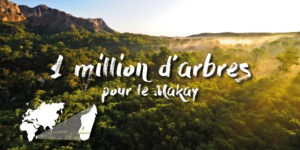After initiating a beekeeping pilot project in 2018, Naturevolution is starting a reforestation project near the villages of Makay: 1 Million trees for Makay. But we could not launch this project without explaining to you how it fits into both a specific local context and a worrying global context. Through 6 articles we take stock of the current state of deforestation, the commitments or actions initiated by the various governments, initiatives in terms of reforestation in Madagascar in particular and finally possible actions at your level to combat deforestation. Quite a programme!
At the international level
Since 1992 and the declaration of the Rio Summit, the fight against deforestation has been discussed at international meetings in order to create a global framework for action and maintain the essential role of our forests.
2010 – During the World Conference on Biodiversity in Nagoya, the objectives of Aichi are adopted by the Parties to the CBD with the aim, inter alia, of “reduce the rate of loss of natural habitats, including forests, by at least half, or where possible to close to zero;” and “a biodiversity conservation target for 17% of land and inland waters and 10% of marine and coastal areas“. The creation of IPBES, the “IPCC Biodiversity” is announced.
2014 – The New York Declaration on Forests sets the goal of “reducing natural forest loss by half by 2020, with efforts to eliminate it by 2030”.
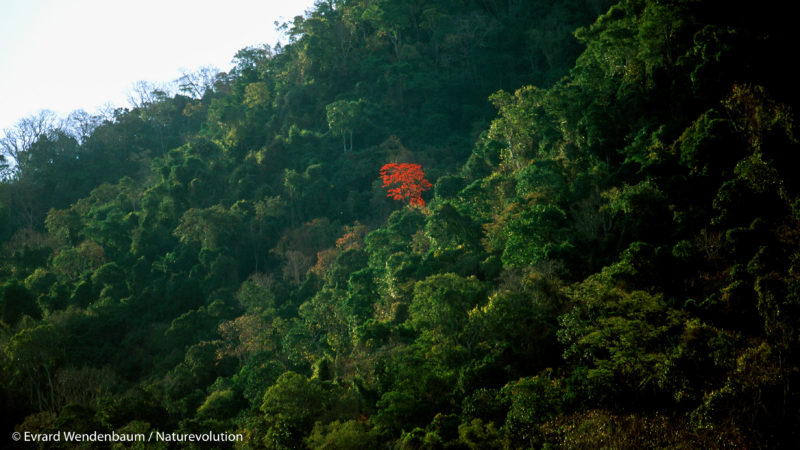
2015 – UN included in Sustainable Development Goal 15 (SDG15) the theme of terrestrial life: ” Preserve and restore terrestrial ecosystems, ensuring their sustainable use, sustainably manage forests, combat desertification, halt and reverse land degradation and halt the loss of biodiversity ».
2015 – The Paris Agreement, which sets the objective of keeping global warming “well below 2°C”, recognizes “the importance of conserving and, where appropriate, strengthening sinks and reservoirs of greenhouse gases”. Among these sinks and reservoirs of greenhouse gases, forests store a significant proportion of carbon. During COP21, seven countries signed the Amsterdam Declarations, which aim to eliminate deforestation in agricultural supply chains and support private sector efforts to support sustainable palm oil supplies by 2020.
2018 – The latest report of the IPCC (Intergovernmental Panel on Climate Change) warns of the need to preserve carbon sinks, without which it will be impossible to limit global warming to 1.5°C compared to the pre-industrial era.
2019 – The IPCC publishes a thematic report on Soils & Climate Change. The report confirms the significant impact of deforestation and agriculture on greenhouse gases (1/4 of the land is degraded by human activity). In the face of the current climate crisis, IPCC scientists are highlighting two major solutions: protecting and restoring forests, accompanied by a radical transformation of the global food system.
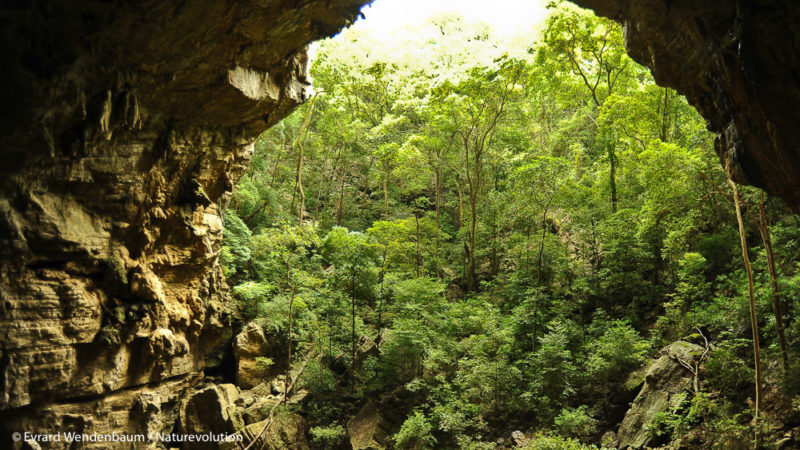
At European level
The European Union has had a forestry strategy since 1998 to promote sustainable forest management.
In 2013, the European Commission published “A new EU Strategy for Forests and the Forest Sector“ which aims to guide EU forest policy towards 2020 with two main objectives and a budget of €8.2 billion over 5 years:
- ensuring that Europe’s forests are managed sustainably;
- strengthen the Union’s contribution to promoting sustainable forest management and combating deforestation globally.
Regarding deforestation in Europe
Europe’s forests are doing well. They cover 182 million hectares (5% of the world’s forest area) and 43% of the EU’s land area. Europe is the only region in the world where forest area is currently increasing, with an estimated growth of 800,000 hectares per year according to the Forest Europe report “State of Europe’s Forests 2011“. However, only 4% of Europe’s primary forests remain and some are still threatened, such as the Białowieża Forest, the oldest primary forest in Europe, threatened by logging in Poland, and the Hambach forest in Germany, threatened by a coal mine.
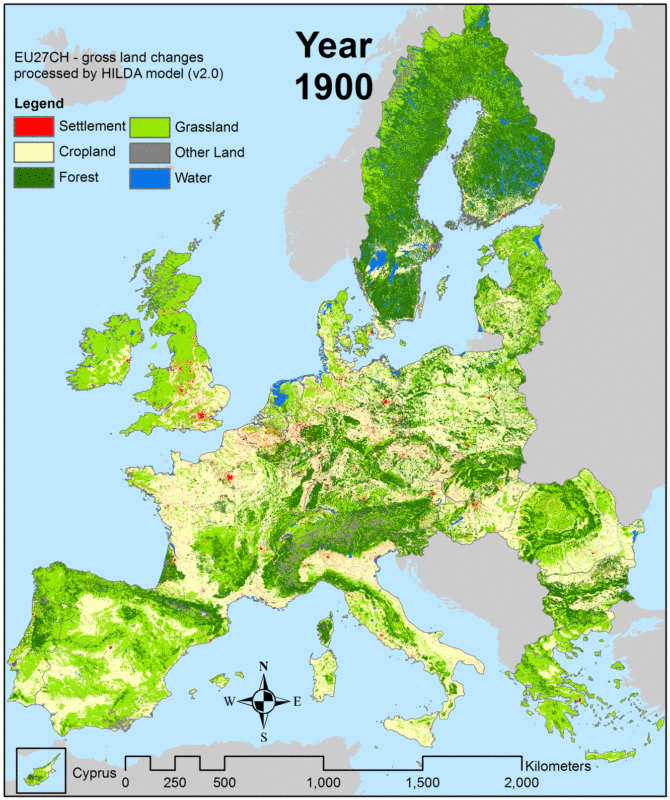
Regarding the deforestation caused by Europe in the rest of the world
Between 1990 and 2008, Europe was responsible for the deforestation of an area equivalent to Portugal (9 million hectares) for its imports of agricultural products, including soya, palm oil and cocoa. This is “imported deforestation”.
According to a study by the European Commission in 2013 (The impact of EU consumption on deforestation), 39% of the world’s imported deforestation is caused by Europe. Europe is then the continent that generates the most imported deforestation, and the commitments made in 2014/2015 aim to tackle the problem. France, through its climate plan and in particular its “National Strategy to Combat Imported Deforestation” published in July 2017, has committed itself to “put an end to imported deforestation”. The challenge now is to fulfil these various commitments, which are slow to materialise, notably through measures on EU trade.
On 23 July 2019, the date on which France ratifies the CETA (Free Trade Agreement with Canada), the European Commission publishes the document “Strengthening EU Action to Protect and Restore the World’s Forests” and proposes 5 priorities and key actions:
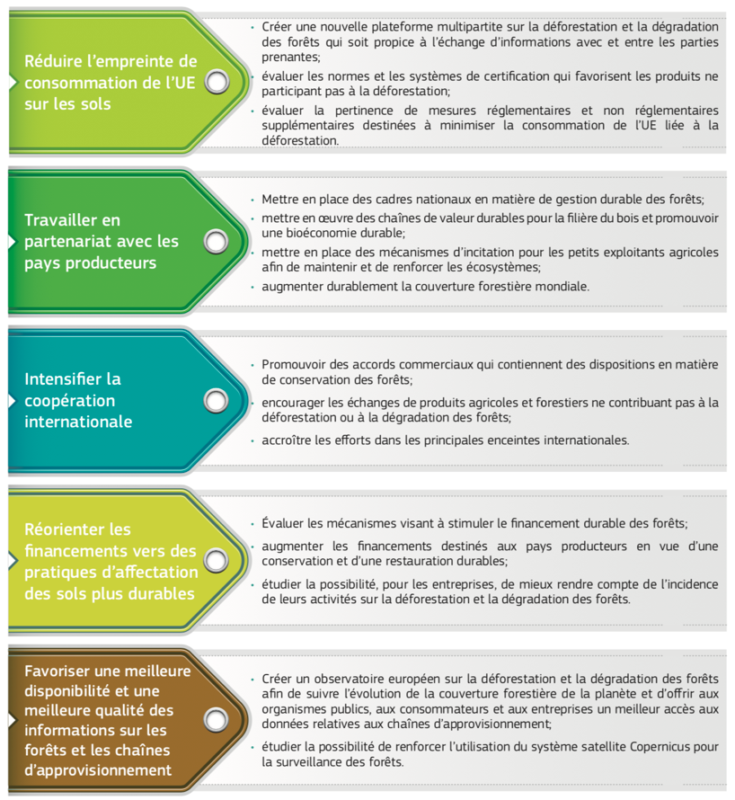
To find out more, the European Parliament proposes a thematic fact sheet: The European Union and forests.
For what results ?
For 27 years our governments have maintained that the fight against deforestation is a priority, but what about today ?
As we saw in the previous article, the state of deforestation in 2019, an overall slowdown in the rate of net deforestation was observed for the period 2000-2010, with an estimated average annual loss of 7 million hectares.
What will be the outcome for the decade 2010-2020 ? 2020 is precisely the target date for setting the main policy objectives : Bonn challenge on reforestation, the New York Declaration on the Protection of Forests, the Sustainable Development Goals, the Amsterdam Declarations on Supply Chains, and the Aichi Convention on Biodiversity.
New tools, such as Global Forest Watch, make it possible to track rainforest loss annually, and on a moving average. After a period of stagnation, deforestation seems to have picked up again in recent years, indicating that all these international agreements are not translating into real results. The reason for this is undoubtedly that they are not accompanied by a fundamental change in the global economic system. The results of these commitments is therefore likely to be very disappointing in 2020.
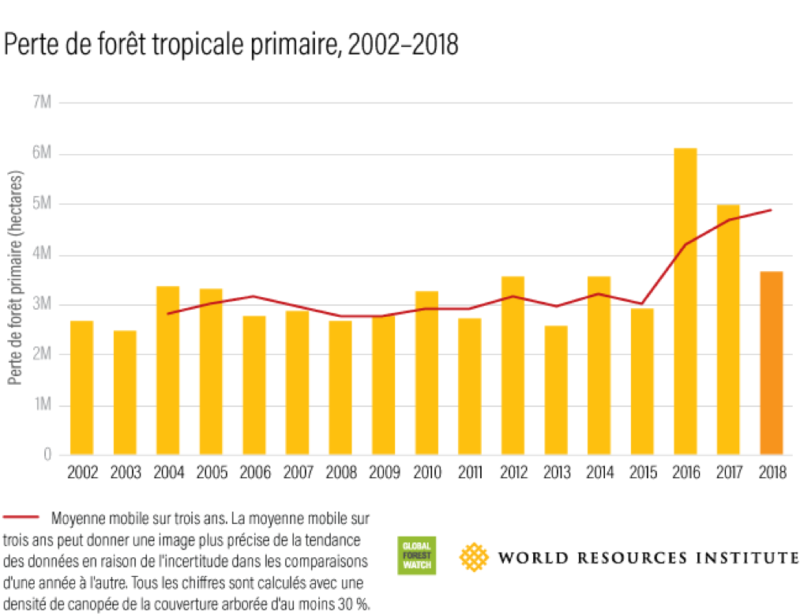
A greening of the planet ?
However, despite persistent deforestation, vegetation areas on the planet increased by 5% between 2000 and 2017, which is still the equivalent of the Amazon rainforest. Good news ? Bad news ?
Unfortunately, this is rather bad news:
- 70% of the greening is due to global warming, which allows vegetation to develop in northern latitudes.
- In India, significant greening is to be noted, but this is due to the increase in cultivated areas.
- In China, an extensive reforestation policy has been under way for several decades to combat desertification, which affects a quarter of the country and 400 million people. Although forested areas have increased considerably, the low diversity of selected tree species results in forests that are not conducive to biodiversity.
- Finally, this gain does not compensate for the loss of natural vegetation and the extremely rich biodiversity found there, particularly in tropical regions such as Brazil, Indonesia and Congo.
Hope for Indonesia’s forests
An optimistic outlook, highlighted by the latest Global Forest Watch report, concerns Indonesia. Following the 2015 fire crisis, Indonesia has seen three consecutive years of serious reduction in deforestation. In 2020, the trend continued, with deforestation at its lowest level since 2004, a feat hailed by Mighty Earth.
In 2011, the government introduced a moratorium on deforestation (no new logging permits for primary forests and peatlands), which, although insufficient to effectively combat deforestation, has led to some progress from 2016. The moratorium was made permanent in the summer of 2019, but its impact is very small: there are many loopholes to circumvent it and the areas covered are largely insufficient, as Mongabay describes in an excellent article. Malaysia, for its part, is considering a cap on the country’s oil palm plantations.
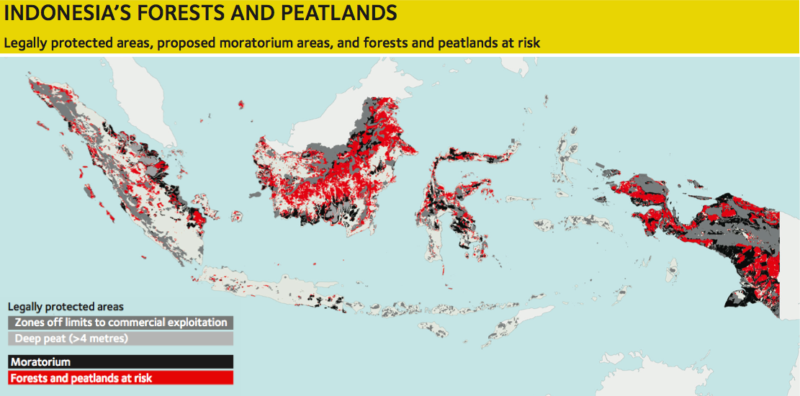
In black, the areas covered by the moratorium; in red, the areas not covered and at risk; in light grey, the deep bogs that store an incredible amount of carbon. Source : Greenpeace
But let’s not forget that everything can quickly change for the worse (as in Brazil and the US recently) and that public policies will only have an impact if the government actively combats illegal deforestation and closes legal loopholes. The palm oil industry remains the primary driver of rural development – an industry that employs 18 million people – but current plantation techniques mean that plantations are particularly profitable only on recently deforested land, with the sale of cut wood covering investment and thus making it profitable in the first year. The fires, on the other hand, increased again in 2019, highlighting a lack of follow-up on the ground.
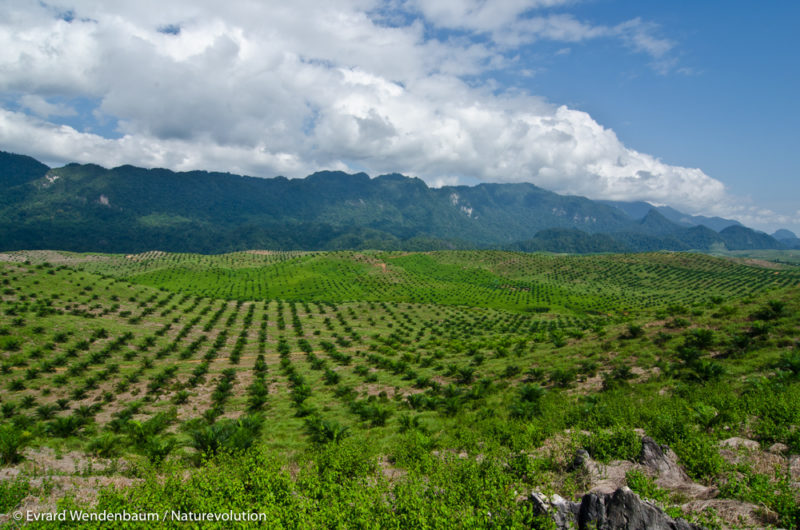
Protected areas to preserve forests
Meanwhile, the number of protected areas continues to grow too slowly, with 15% of the world’s land surface having protected status in 2019 (follow the coverage of protected areas worldwide). Will we be able to meet the Aichi convention targets on biological diversity, which set 17% of protected area by 2020? And will we manage, before it’s too late, to protect half the surface of the protected planet – including continents and oceans – as recommended by the Half-Earth project scientists?
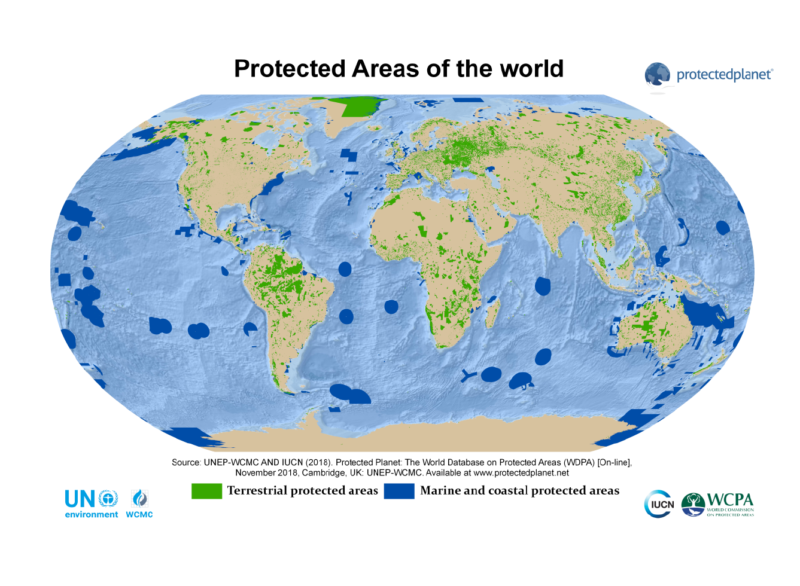
It should also be borne in mind that half of the world’s protected areas are protected only on paper (paper parks or ‘paper reserves’) and are therefore subject to strong anthropogenic pressures. It is therefore just as important to act to create new protected areas as it is to ‘manage’ protected areas and develop projects in them so that nature conservation becomes a reality for the benefit of all.
This is what Naturevolution has been doing since 2009 in the Makay massif in Madagascar by applying for thecreation of the New Makay Protected Area (obtained in 2017), being recognized as the manager of the protected area, and developing a conservation strategy.
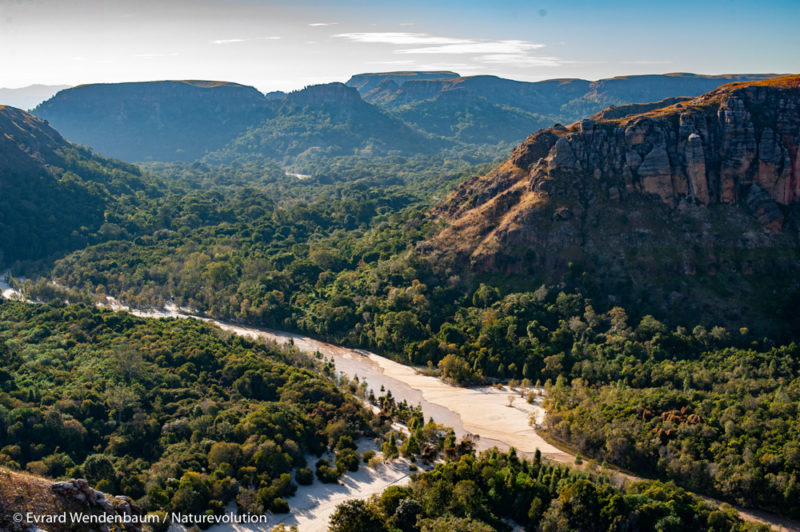
While the creation of protected areas requires slow and complex public procedures, other actors choose to buy land privately.
- For example, Douglas and Kristine Tompkins, founder of The North Face and former CEO of Patagonia, respectively, bought large tracts of land in Argentine and Chilean Patagonia, developed programs to protect, regenerate and reintroduce species, before handing them over to the governments of Chile and Argentina to become national parks. Their many projects are now grouped under the Tompkins Conservation Foundation.
- This is also what Kalaweit is doing in Indonesia, buying tracts of rainforest to protect them.
- Closer to home, the ASPAS association buys private land in France to return it to nature by turning it into Wildlife Reserves. Their latest and biggest project to date, the purchase of 500 hectares of the Valfanjouse estate in Vercors, was the subject of a report by France 24.

Our partners

An initial financing of €10,000 has been obtained from Maltem, allowing the launch of the project 1 Million Tree for the Makay. Maltem is an ecosystem of consulting companies specialising in digital transformation and sustainable innovation, and a partner of Naturevolution since 2016.
The whole series of articles
- (1/6) Deforestation: a state of play in 2019
- (2/6) Deforestation: chronology of government (in)action ?
- (3/6) Reforestation: opportunities and limitations
- (4/6) How to act against deforestation?
- (5/6) Deforestation in Madagascar and the Makay massif
- (6/6) Why protect the forests of Makay ?
An article by Gaëtan Deltour and Yann Bigant


